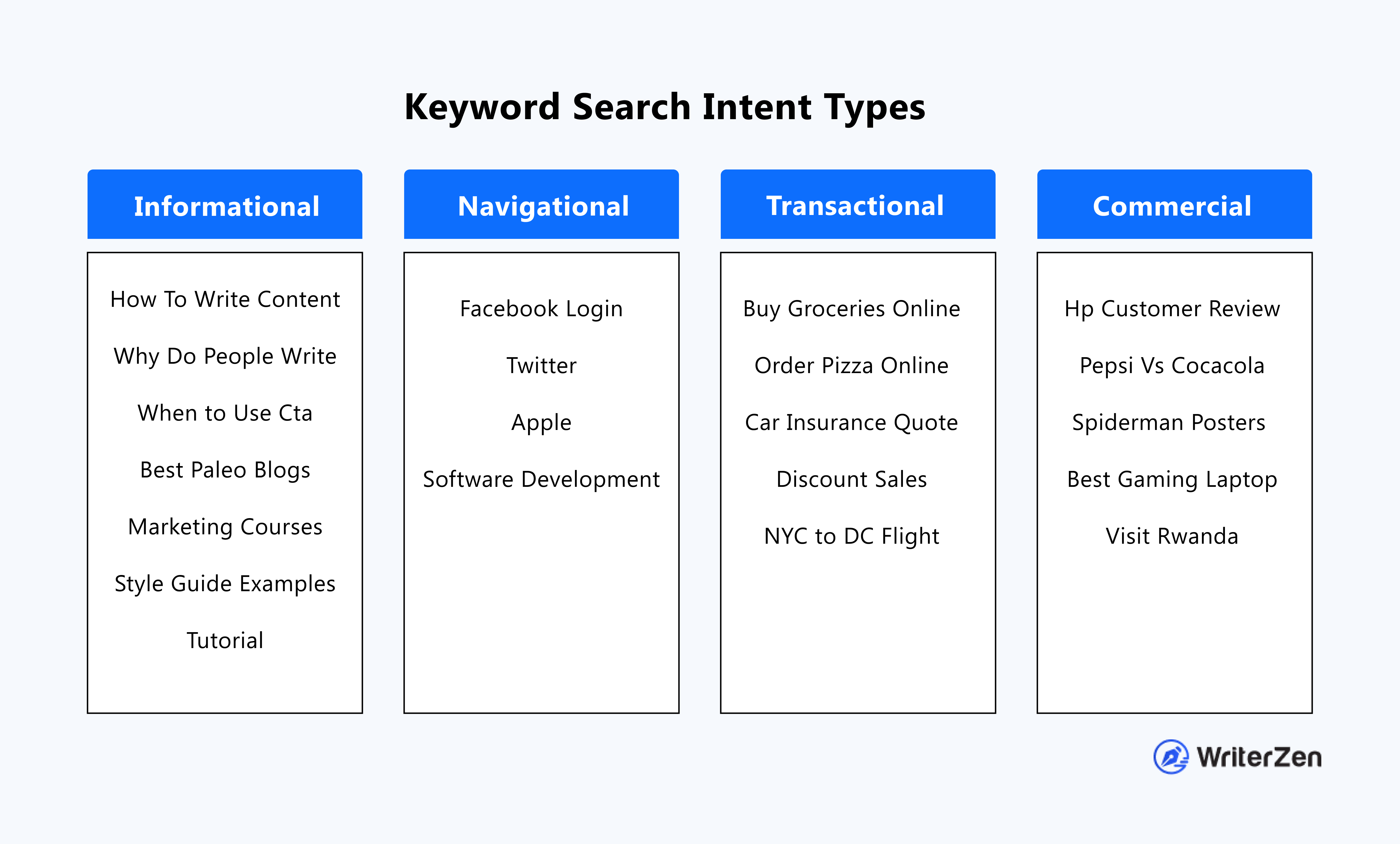Pulse of Information
Your source for the latest insights and updates.
Cracking the Code of Search Intent
Unlock the secrets of search intent and boost your SEO game—discover what your audience really wants!
Understanding the Different Types of Search Intent: A Comprehensive Guide
Understanding search intent is crucial for optimizing your content and improving SEO. Search intent refers to the reason behind a user's query, which can generally be classified into four main types: informational, navigational, transactional, and commercial investigation. Informational intent is when users are looking for answers to specific questions, while navigational intent occurs when they seek a particular website or page. On the other hand, transactional intent indicates a desire to make a purchase, and commercial investigation involves users comparing options before making a buying decision.
Recognizing these different types of search intent can significantly enhance your content strategy. When crafting your blog posts, it's important to tailor your content to meet the specific needs of each intent type. For instance, for informational searches, aim to provide detailed guides or how-to articles. In contrast, for transactional searches, product pages, reviews, and clear calls-to-action are essential. By doing so, not only do you align your content with user expectations, but you also improve your chances of ranking higher in search engine results.

How to Align Your Content Strategy with Search Intent
Aligning your content strategy with search intent is crucial for driving targeted traffic to your website. To achieve this, start by conducting thorough keyword research to identify what your audience is searching for. Utilize tools like Google Keyword Planner or Ahrefs to uncover relevant keywords and phrases. Once you have a list of potential keywords, categorize them into different types of search intent, such as informational, navigational, or transactional. This classification will guide you in creating content that meets the specific needs of your audience, increasing the chances of engagement and conversion.
After establishing your keywords and their respective search intent, focus on crafting high-quality content that addresses those needs. For instance, if your audience has informational intent, consider creating detailed guides, how-to articles, or FAQ sections. On the other hand, for transactional intent, product reviews and comparison articles can be very effective. Remember to optimize your content with appropriate on-page SEO techniques, including meta tags, headers, and internal links to improve visibility in search results. By consistently delivering content that aligns with search intent, you'll foster a stronger connection with your audience and improve your site's overall performance.
The Importance of Search Intent in SEO: What You Need to Know
Understanding search intent is crucial for optimizing your content for search engines. It refers to the reason behind a user's query—essentially, what they hope to achieve when they type a specific keyword into a search engine. By identifying whether the intent is informational, navigational, transactional, or commercial, you can tailor your content to meet the specific needs of your audience. For instance, if a user is searching for 'best running shoes', their intent is likely transactional, and providing comprehensive reviews or comparisons can significantly increase engagement and conversion rates.
Incorporating the right SEO strategies based on search intent not only improves your chances of ranking higher in search results but also enhances user experience. Recognizing the different types of search intent can help you create targeted content that resonates with your audience. For example, if you're focusing on informational intent, crafting in-depth guides or blog posts can drive organic traffic to your site. Ultimately, aligning your content with search intent is a fundamental practice that can lead to increased visibility, better user satisfaction, and higher conversion rates.